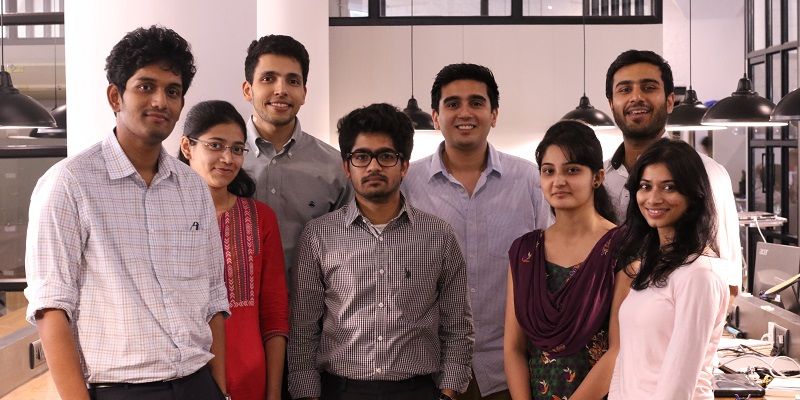Why subscription-based Snackible decided to pivot to a FMCG brand
Mumbai-based Snackible got itself a new lease of life by pivoting from a subscription-based model to a retail FMCG product.
It is 4 pm and the packets of chips and biscuits have found their way onto the desks of office workers, next to their coffee mugs. The early evening urge to snack is a familiar monster.
“What I understood is that a couple of hours after the lunch break, mostly between 4.30 and 6.00 pm, a lot of my colleagues would find themselves compulsively snacking on all kinds of unhealthy snacks, ranging from fried snacks delivered by roadside hawkers to processed and packaged snacks available over the counter,” says Aditya Sanghavi, who was then working at a Mumbai-based consulting firm.
The urge to find a healthy yet tasty option prompted him to launch Snackible in May 2015 as an online snack subscription company that offered its customers with a variety of healthy, tasty, affordable snacks at their doorstep through a simple subscription. Options included ‘Cream and Onion Wholewheat Thins’, ‘Seedy Crunchers’, ‘Herbs and Cheese Makhana’, ‘Whole-wheat Belgian Choco chip Waffles’ and ‘Baked Bhakarwadi’.

Subscription to on-the-shelf
“When we began with the subscription model, we believed that we would be able to change and transform the way people snacked. But then with time we found subscription was a hard business. Snacks, we realised, were more of an impulsive buy,” says Aditya.
The team also realised that most customers enjoyed the freedom of choice, where they could decide on the kind of snacks they want and pick up as much as they wanted at the time.
“Though the subscription model allows customers to choose the snacks in their box, each box has a limited number of packets in one particular size, which ultimately restricts the customer,” explains Aditya. Today, about 15 percent of their revenues come from subscriptions. Regular, off-the-shelf purchases account for the rest.
The problem with snack subscription isn’t India-specific. A report in the New York Times suggests that these businesses are neither easy nor lucrative.
The report has gone on to cite several examples like the subscription-based snack box service Nibblr, which was started by General Mills in 2014 and shut down a just over a year later. Even retail juggernaut Walmart, which started Goodies.co, had to shut it down after a year because it was an unviable business. It also adds that most food subscription businesses offer one real business- data.
Also read: This woman entrepreneur aims to make healthy snacking mainstream
The problem of moolah
Aditya adds that the RBI’s current regulatory framework doesn’t allow payments to be renewed automatically when a subscription cycle ends. This, in turn, makes it necessary for a customer to pay in advance for the duration of the subscription period.
Pivoting from an initial online subscription-only sales model to a multi-channel sales model meant doing several product iterations. Aditya adds that there was a stronger emphasis on R&D in product innovation to create inimitable products that are typically not found over the counter.
“A lot more focus has been put on creating an equitable balance between health and taste. In essence, Snackible is driving home its motto of revolutionising snacking,” adds Aditya.
He adds that they have integrated data and analytics in their core decision-making process. Customer behaviour and purchase patterns are analysed using quantitative as well as qualitative metrics and the outcome of such analysis forms the foundation of product development and expansion strategy.
Initially, when the team had placed their products at cafes they found that there were certain variants that they enjoyed and came back for. Basis this initial feedback the team began to work on manufacturing and distribution.
Changing gears
Snackible’s biggest challenge when it initially forayed into the retail segment was to set up a robust, countrywide distribution and logistics network. Having sold products through predominantly online channels, the dive into retail required acquiring a deep understanding of the existing market. And now that their products were being sold off the shelves and not online, a re-branding exercise with all-new packaging was in order.
Aditya adds that the change was necessitated to provide their customer base with the autonomy to choose snacks of their choice in the pack size they want and as many packs as they want. From there, the team began working on changing Snackible into an all-encompassing FMCG company with both an online and offline presence.
As the team had already placed some of their products on shelves across different outlets of Café Coffee Day to get people to try their product and later subscribe for it online, Aditya decided to use the same push when the startup was transforming itself into an FMCG player.
“We built over 25 different snacks to ensure that there would a wide variety of snacks available in stores,” says Aditya. The team has raised angel funding of $175,000, led by Nibhrant Shah, Founder of Isparva and Themis; Anandbir Singh, Founder Anandini Financial Services; Pratik Singhi, CEO of Lakshya Consulting; Jitendra Mahnot, CEO of Startech Engineers India, and Mastercard executives Vikram Mehta and Murali Nair.
“The funds are meant to expand our distribution networks across the country, hire the right talent, focus on marketing and launching new products,” adds Aditya.
Snackible’s range is today available in Mumbai, Delhi and Bengaluru at Godrej Nature’s Basket, Foodhall and Hypercity. Apart from that, they are also present in cafes and restaurants, vending machines, canteens, gym outlets and nutritionists.
Also read: 8 Indian food and beverage startups making teatime snacking guilt-free
Lifestyle changes a good sign for the snacking business
Today, the team claims online sales account for 30 percent of the total revenue. Thanks to it now diversified distribution channels, retail which makes up for 40 percent of its top line while institutional sales bring in the remaining 30 percent. In the past two years, Snackible claims to have grown to 32,000 subscribers and a presence in 160 cities across India across 650 points of sale.
Given that people are getting more conscious about what they eat, Snackible seems poised to make use of this opportunity. A report by PwC-FICCI suggests that the healthy foods, beverages and supplements segment in India is worth close to Rs 15,000 crore.
However, as an upcoming player, Snackible has miles to go before it catches up with industry leader Haldirams, which rakes in annual revenues of Rs 3,500 crore. In direct competition, Snackible has to deal with TruWeight and the more recent EatFit, a health-food subscription service from CureFit, the latest startup from Myntra founder Mukesh Bansal and Ankit Nagori. In the single-serve snacks and drinks space, Yoga Bar, Green Snacks and Valencia are battling for shelf space.
In terms of future growth, says Aditya, they intend to increase their points of sale from 650 to 2,000 by end of this fiscal year. To achieve this, they will launch a variety of new products under the Snackible brand at multiple price points to cater to a more diverse customer base.
“We are in advanced talks with multiple overseas companies, including those in the UK and the UAE, to make our foray into the international markets. We intend to raise a Series A round in the next 12-18 months. By 2018, we intend to reach turnover of $1 million,” adds Aditya.








